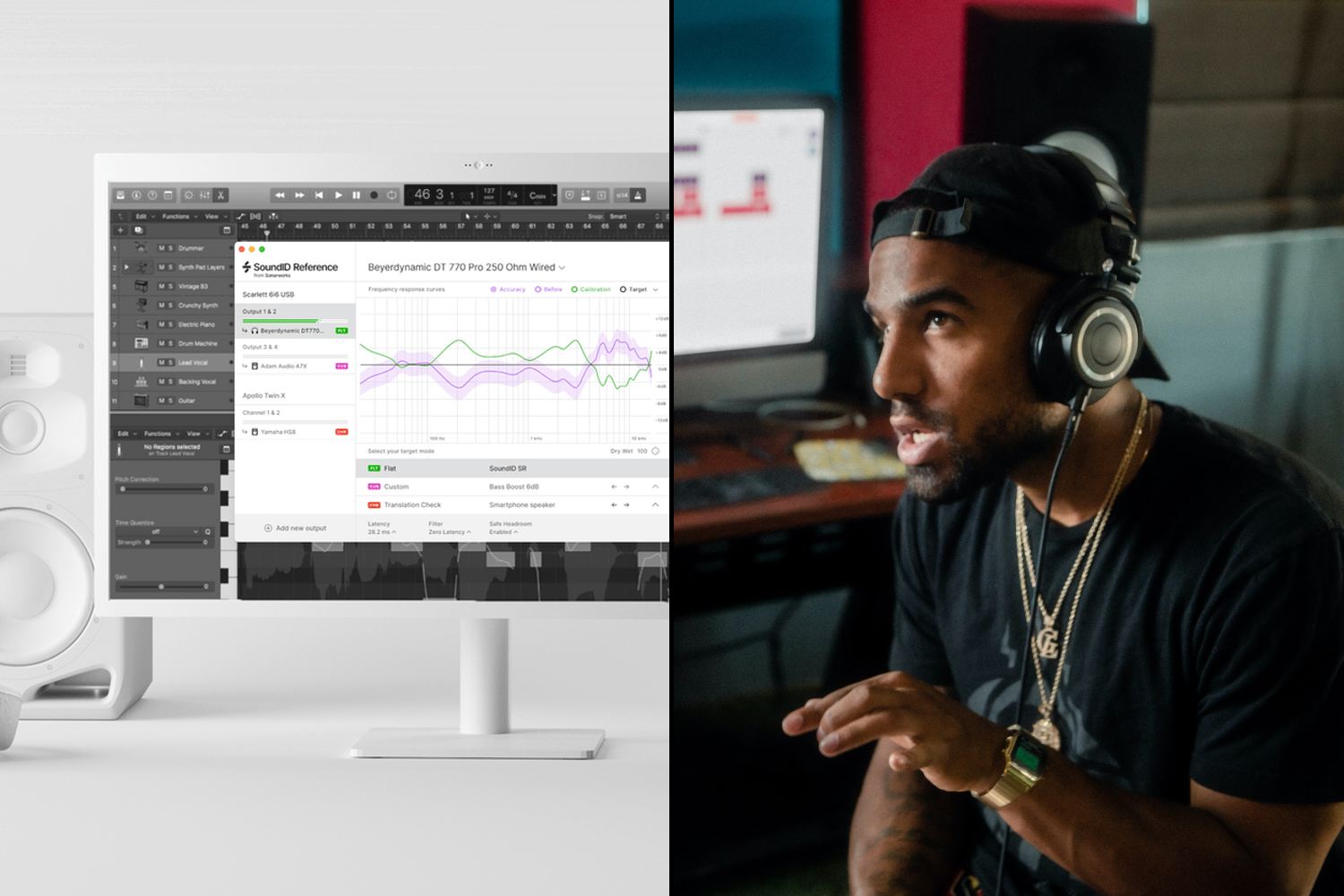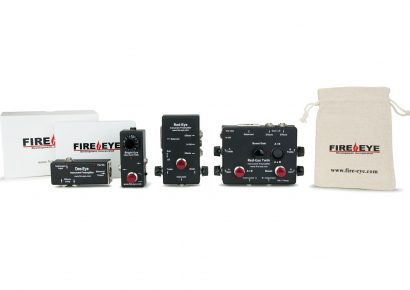A look at the industry-changing software providing an increased view of what's happening in your mix.
The world of room correction software and headphone calibration tools is largely uncharted for most working in the audio/music space.
On the one side, we have the remnants of the big studio system, who believe that the best course of action when it comes to monitoring is to nip it in the bud, spending tens of thousands of dollars on trusted names (of the posh, three letter acronym variety) and employing the services of expert Acoustic consultants as a means to achieve optimal accuracy (and who see any alternative approach as Snake Oil bordering on heresy).
Read all the latest features, columns and more here.
For years, this kind of top-down approach dominated the professional studio zeitgeist and for good reason, the results spoke for themselves-with certain manufacturers becoming synonymous with design awards, platinum plaques and Grammy’s, both technical and artistic. Being a high-stakes, results based industry, this in turn created something of a studio dogma when it came to monitoring solutions-one based on brand allegiances and marketing shorthand as opposed to any kind of in-depth understanding of the science of audio or acoustics.
This kind of market simplicity and fundamental breakdown in the nuances of audio theory only got worse as the home studio boom took hold, to the point where it was not uncommon to see $7k+ monitoring systems in home recording setups with little or no acoustic treatment.
Caught in the crossfire of all this is the budding audio engineer, a civilian attempting to make sense of it all amidst the sea of conflicting online opinion, vitriolic brand loyalty and gauging the economic impact of dropping $10k on speakers for their fledgling FL Studio beat making career. This is where room and headphone correction technologies (like Sonarworks SoundID reference) can be such a liberating tool.
It’s often said (somewhat erroneously) that simply by knowing the electro-acoustic biases of your monitors or headphones intimately enough, you can get by without room correction or treatment. There is some truth to this, as it’s always important to master your audio equipment just as you would with any musical instrument, if you are trying to yield quality and detailed results. However, you can’t get by on this method alone, and with reference software evolving far beyond the vague pseudo-science it was once perceived as, you no longer have to.
When mobile devices transformed into the main format for engaging and listening to music, optimising playback to ensure accurate reproduction on devices like AirPods, mobile Bluetooth speaker systems, smartphones, and laptop speakers became an essential part of the overall procedure. Mix translation across different speaker systems has always been a crucial part of the mixing and mastering process, and with the number and variance of our playback environments expanding to it’s outer limits, the idea of a ‘one master for all’ mentality has shifted with it, resulting in some notable albums being remastered and optimised for playback on these new listening devices.
Is room/headphone correction software a healthy substitute?
If you listen to the latest versions of Songs From The Big Chair (1985) from Tears For Fears, or Massive Attack’s Mezzanine (1998) these are examples where the audio has been remastered for the miniature speaker systems with which we now consume music. This shift was a positive one for musicians, as there was a definite widespread increase in the availability of technology as a result. Specialised and even portable monitoring systems for helping your music translate on these new playback devices are now in a more accessible price bracket than ever. Examples like the IK Multimedia iLoud range and the Ruark Audio MR1 offer extremely compact, consumer-friendly solutions for reference listening. What’s more, we are currently experiencing a golden age in DSP based software solutions for room and headphone correction, which has in many ways proven to be the first serious attempt to take the professional monitoring experience into the hands of beginner engineers.
The most widely recognised of these plugin solutions is a product from Latvian software development company, Sonarworks, offering specialised options for both headphone and speaker profiling.Such software has been pivotal in the popularisation of these kind DSP-based workflows, in many ways serving as the great equaliser (pun absolutely intended) between big budget studio and the humble home monitoring chain.
In the case of the headphone mixer or those using entry level monitoring equipment, it is without question an extremely attainable method to ensure better mix translatability between their specific (often flawed) monitoring situation, and into the wild world of greater audience playback.
For the itinerant engineer, or those working across multiple rooms or monitor setups, it also serves as a great way to ensure a streamlined workflow from one work environment to the next, strengthening the relationship between speaker, headphone and room and providing a flexible and scalable monitoring situation throughout.
As we were curious to find out more, we spoke with the Head of Research & Development at Sonarworks, Mikus Salgravis. As it turns out, we learned that just as much development goes into their listening solutions as their pro packages for creators. “Collaboration is a priority for Sonarworks users” explained Ugis Kampars, Accounts Manager at Sonarworks. Within the last 2 years we’ve seen an increasing demand for remote music production, so using the same speaker and headphone profiling software as your collaborators reduces the chance of things being lost in translation.
Out of the Box solutions?
Like all things Electro-Acoustic, there is always just as much happening in the open air as inside the system, and like Sonarworks incredible work in the software domain, hardware manufacturers are also clambouring to find ways to bridge the divide between pro level accuracy and the changing face of the Studio market. Niche manufacturers like Blue Sky are providing highly specialised hardware-integrated solutions for room optimisation in what they deem “acoustically challenged” spaces. Systems like these may leave the cost-conscious beginner market behind, but if you consider the cost of making structural and corrective acoustic changes to your room or building a customised acoustic environment from scratch, you’ll soon find out that digital room correction is still the more affordable and flexible route. Be aware though, that manufacturers of excellent monitoring systems do not automatically design great room correction software, so be sure to do your research.
When is it necessary to use headphone calibration software?
Just as is so often the case with so many creative pursuits, this will almost completely depend on your personal situation and what your end goals are as an engineer. For those looking for the most flexible, smallest footprint solution for reference monitoring, simply chucking SoundID Reference on your master bus can undoubtedly help in avoiding some of the guesswork involved with trying to get your mixes to translate, either at home or on the road. It provides an awesome baseline of accuracy from which to work from and with their impressively expansive list of headphone presets, is an awesome controlled variable for all engineers across the board. Sonarworks also has the handy addition of allowing you to switch between some extremely handy vantage points for certain frequency and transient work (namely in the form of it’s dead accurate modelling of a couple of famous unported nearfields, prized for their exposed mid-range).
Rather than mixing with these plugins constantly active, many will find their Eureka moment when entering the final stages of your mix or when A/B’ing with reference tracks through the system wide version of the software. For this kind of application, this software can help iron out any creases in dynamics and make adjustments to stereo imaging without having to take off your headphones, which can save you time and labour.
In the hardware domain, Having access to stereo crossfeed control on headphones is not exclusive to software either, manufacturers like SPL have made these options available in the monitoring controllers and headphone preamps for many years. This could be an effective option for those seeking out headphones as a discrete solution for mixing at home, especially when combined with a precision analysis and metering tool. Specialised hardware and software solutions aren’t cheap, but if you’re spending hours mixing you want reproduction as accurate as possible to ensure results. The lack of stereo crosstalk when using non-calibrated headphones can be tricky to navigate, especially for those still learning about mixing as an art form or when attempting to self-engineer their own performance.
If you have the space, finances and available I/O to allow for it, you might find the most viable option is to have multiple monitoring systems of different sizes rather than going all-in on a single high-end room corrective monitoring solution, but again this will also have to be weighed up in relation to your acoustic treatment and monitor placement and various other logistical considerations that come with monitoring in the open air.
Regardless of whether we are talking about in-the-box software emulations or their physical counterparts, one thing that’s obvious is that the more options at your disposal, the better your overall idea of how your mix will translate on other playback systems. As you alternate between monitor speakers and headphones you might already be familiar with the fundamental differences between them and having a baseline understanding of the electro-acoustics at play, their inherent biases and the manner in which this will translate to consumer playback is vital to the production process.
Without the necessary knowledge and experience, we can easily be left ear-fatigued and frustrated when the hours of work on a mix still won’t translate to other formats in the way we’d like it to. Headphone calibration software can helping attain the kind of accuracy required when we don’t have the luxury of multiple reference monitoring systems or a blank cheque for studio monitoring.
If you’re a working professional earning a living from audio or a hobbyist simply trying to make better music, tools like room correction and headphone calibration software can become powerful allies in your fight. Once we understand the design of the equipment and its capabilities, it’s far easier to make it an intrinsic part of the workflow. So remember to try before you buy and always keep an ear open.
Check out Sonarworks SoundID Reference software through their Australia distributor Federal Audio.







